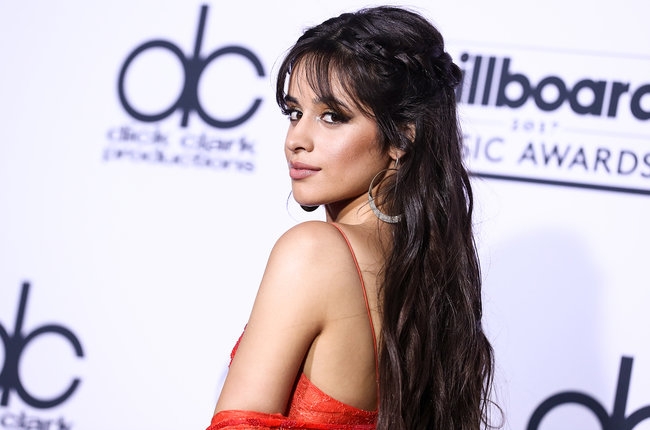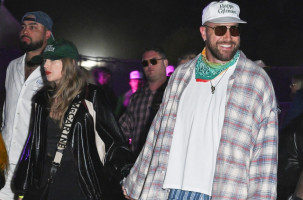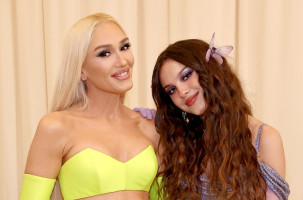One year ago on Wednesday (Jan. 10), Ed Sheeran broke the world record for most Spotify streams in a day by releasing two singles, "Shape of You" and "Castle on a Hill," at the same time. The former has garnered over 1.55 billion streams to date, claiming the crown for Spotify's most-streamed song of all time; the latter has racked up 520 million streams, which, while only a third of the activity of its companion track, is still impressive by any artist’s standards.
That moment in music history may be unparalleled in sheer volume, but it's far from unrivaled in strategy. An increasing number of A-list acts are experimenting with releasing two singles simultaneously instead of one -- both to give existing fans more content and choice and to test potential new audiences in an organic manner.
Jake Udell, founder of artist management company TH3RD BRAIN (Gallant, Zhu, Krewella), documented this trend in a recent issue of his daily blog and newsletter Art of a Manager. "I thought releasing two songs [at once] would be distracting for the fans and make it challenging for the label to focus all attention on the single, but I was completely wrong," he wrote.
Two of Udell’s examples came from hip-hop/R&B: The Weeknd released both “I Feel It Coming” (574 million streams to date) and “Party Monster” (233.7 million streams) on Dec. 6, 2016, while Drake released both “One Dance” (1.39 billion streams) and “Pop Style” (241.4 million streams) on Apr. 5, 2016. In each of these pairs, one can easily infer which single was designed for top-40 radio (in this case, “I Feel It Coming” and “One Dance”), and which was catered to the artist’s original, core fan base (“Party Monster” and “Pop Style”).
As Udell pointed out, however, the non-hit tracks still benefit significantly from their more popular pairings, performing as if they were standalone radio singles. For instance, “Pop Style” continues to over-perform compared to the rest of Drake’s catalog: the only other songs that have outpaced “Pop Style” so far in terms of volume are “Controlla,” “Too Good” (which features Rihanna) and “Hotline Bling” (which was released prior to the two singles).
By far the most prolific proponent of this strategy so far is Camila Cabello, the former Fifth Harmony member whose eponymous debut album was released last night -- and whose singles release schedule was almost entirely organized in pairs.
On Aug. 3, 2017, Cabello simultaneously released "Havana" (currently No. 2 on the Billboard Hot 100) and "OMG," which have garnered 546 million and 87 million streams respectively. Just four months later, the singer release another pair of singles, “Never Be The Same” and “Real Friends,” attracting 45 million and 27 million streams respectively.
For Cabello’s label team, the two-song approach was useful both for keeping the singer’s core fans excited and for widening playlisting possibilities. “Each time, we used the data from both songs not just to understand fan engagement, but also to see which tracks were better for growing brand-new audiences on a global level,” Celine Joshua, senior vp of commerce/digital at Sony Music Entertainment, tells Billboard.
Reiterating Udell's stance that today's hits are determined post- rather than pre-contact with listeners, releasing two songs at once can fact-check and debunk labels' assumptions about which tracks on an album should be tagged as singles to plug to radio. With Cabello, “‘OMG’ was the alleged hit single that [Sony] kept submitting to our playlists and insisting would be a big smash,” Mike Biggane, head of pop programming at Spotify, tells Billboard. “But by that Saturday morning, we could tell really quickly that ‘Havana’ was the song that audiences were really reacting to. And fortunately, that didn’t mean that ‘OMG’ was doing badly at all.”
Cabello’s Spotify following has grown from around 500,000 monthly listeners in May 2017 (the month she released her first single “Crying in the Club”) to 5.2 million daily listeners at press time. Her success, which has leant heavily on these double releases, holds valuable lessons for a mainstream pop world that still tends to center album-marketing strategies around one-off “impact dates” -- rather than the typical urban-music approach of feeding a continuous stream of content into the marketplace to maximize visibility over time.
“You know what needs to happen? The pop stars need to take a hip-hop approach to releasing music,” Carl Chery, head of artist curation for Apple Music, said in a recent interview on Everyday Struggle, recounting a conversation with the streaming service’s pop and dance programming head Arjan Timmermans. “I can’t remember a streaming story in the pop sphere, where a song took off mostly based on streams.” (Apple declined to comment for this article.)
2018 may be the first year we hear those stories told on a grand scale, as more artists across all genres embrace quicker release schedules to reflect current realities of consumer behavior. John Mayer revealed on Facebook that he will be releasing the tracks from his forthcoming album The Search for Everythingin “waves” of four songs a month, claiming that “there were too many songs to ever get out the door at once.” For her debut EP Don't Smile at Me, Interscope-signed Billie Eilish not only released one single with new artwork every week, but also deliberately packaged each new single with the previous songs to mimic the format of a growing playlist.
“A major pro of Billie's strategy is that she was not forced to choose one out of eight songs on the EP to be the focus based on instinct,” Justin Lubliner, president of The Darkroom, tells Billboard. “Instead, her label was able to pick based on the market's reaction and data to determine which songs to push for playlisting.”
As for release strategies on the extreme end of the volume spectrum -- say, Drake’s 22-track album-cum-playlist More Life, or Chris Brown’s 45-song record Heartbreak on a Full Moon -- their efficacy thrives on the same mindset: being in tune with one's audience and realistic about how that audience behaves. “When Drake put out More Life, he wasn’t necessarily trying to get a hit, but rather was experimenting with time and audience demand,” says Biggane. “Since there’s no mainstream smash on this record, he knew people were going to listen to and talk about it for around three weeks, and after that cultural moment’s over they moved on to something else -- and he was ready for that.”
In other words, the two-song strategy is just one small component of an increasingly variegated marketing toolkit in the streaming era, and the volume and frequency of releases still need to be considered carefully on a case-by-case basis.
“It depends on what race you’re running,” says Joshua. “For us [at Sony], it’s about building a career artist, which means not just finding fans and listeners, but also cultivating repeatability -- and how many times are you really going to listen to a 40-song album? But then again, if you’re at a certain point in your career like Drake and you can put out a 20- to 40-track album and the music is great, why not do it? Whatever works for a particular artist, and whatever allows the data to talk back to us so we can become better marketers, that’s the key.”
Underlying all of these emerging release strategies is the realization that artists today of any career stage are de facto, dynamic media brands, and should treat their marketing as such. “The consumer paradigm is shifting, and reflecting how we want to stay in touch more often with our favorite brands,” Udell tells Billboard. “It’s also an open playing field beyond music -- you’re competing not just with other artists, but also with other blogs and even Netflix series. In order to grab people’s attention, you need to focus on growing your channel consistently. Quality may reign supreme in the end, but content is still king.”
“I do think that if you slow down in an all-access world, you will lose listeners,” agrees Joshua. “The name of the game is to grow.”








